How COVID-19 is Affecting Retail: 7 Key Ecommerce Strategies to Adopt Today
The COVID-19 pandemic is having an unprecedented impact on all areas of life. In this article, our Head of UK Growth, Matt Abbott, explores the affect it’s having on the retail industry, before sharing 7 ecommerce strategies you can adopt to help you successfully navigate this new and extraordinary time.
Written By
Matt Abbott

We’re all experiencing it: the panic buyers and hoarders stripping the supermarket shelves bare, but still being fussy enough to leave the branded baked beans, and the low sugar ones. In reality, it’s a very stark way for consumers to show exactly what their preferences are, what they feel is a necessity to live with in isolation for months (potentially), and what items really are a luxury.
It’s only going to get more difficult; as the government rolls out its financial support there will be a crossover, everyone will be snapping their wallets and purses shut in order to save the pennies.
We will all feel the pinch, but from a digital perspective, every cloud has a silver lining – and when it comes to food, in particular, people are shopping local again. They’ve discovered that the field next to them has potatoes in and they can be bought locally (without plastic and without unnecessary food miles – win-win, right?).
In certain industries, with isolation and travel restrictions in place, online shopping and requests for delivery have soared. Did you know, for instance, that some of the most popular items sought out online last month were long-lasting consumables like soup and rice (whose sales increased by nearly 400% compared to March 2019) and weight training equipment (which saw a 300% increase)? This is testing the ability of local businesses to adapt; it is assessing and challenging their ability and desire to change.
Agriculture has a wonderful mix of traditional and innovative techniques for taking its products to market, but the fight or flight response to adversity will see the fighters turn to technology to ensure their survival.
But how far will it go?
Embracing new technology
With grocery retailers experiencing such pressure that delivery slots are 2-3 weeks away, and online supermarket Ocado being so overwhelmed that they stopped taking on new orders altogether, the agile, responsive business will be the next to thrive.
Who will be the first to offer same-day delivery, satisfying consumer expectation and the need for instant gratification that has been driving the ecommerce industry for the last couple of years?
Spoiler alert: it will be the ones that turn to technology to help them manage their rapidly expanding and expectant customer base.
Time is of the essence to respond to increased demand, so we’ve identified the best (and fastest to implement) tech solutions to make sure that – not only – are businesses adapting in a way that will enable them to support those that need help the most, but they’re also doing so in a stress-free way for themselves and their staff during this turbulent time.
7 ways to quickly ramp-up your ecommerce (and the tools to help you do it)
#1 Get your products online quickly
With consumers increasingly flocking to the internet to fulfil their shopping desires, it’s never been more important to get your products online quickly and efficiently. Our go-to tool for this? Excelify.
Leveraging a third-party app like this will not only help you meet shoppers’ expectations in terms of stock and product listings, but it can help reduce the strain on your team during this busy lockdown period.
To save time and resources when adding products to your Shopify store, a bulk upload is the way forward. This takes just one click via the home screen of Excelify! Get our top tips on how to correctly format your product data for a bulk import here.
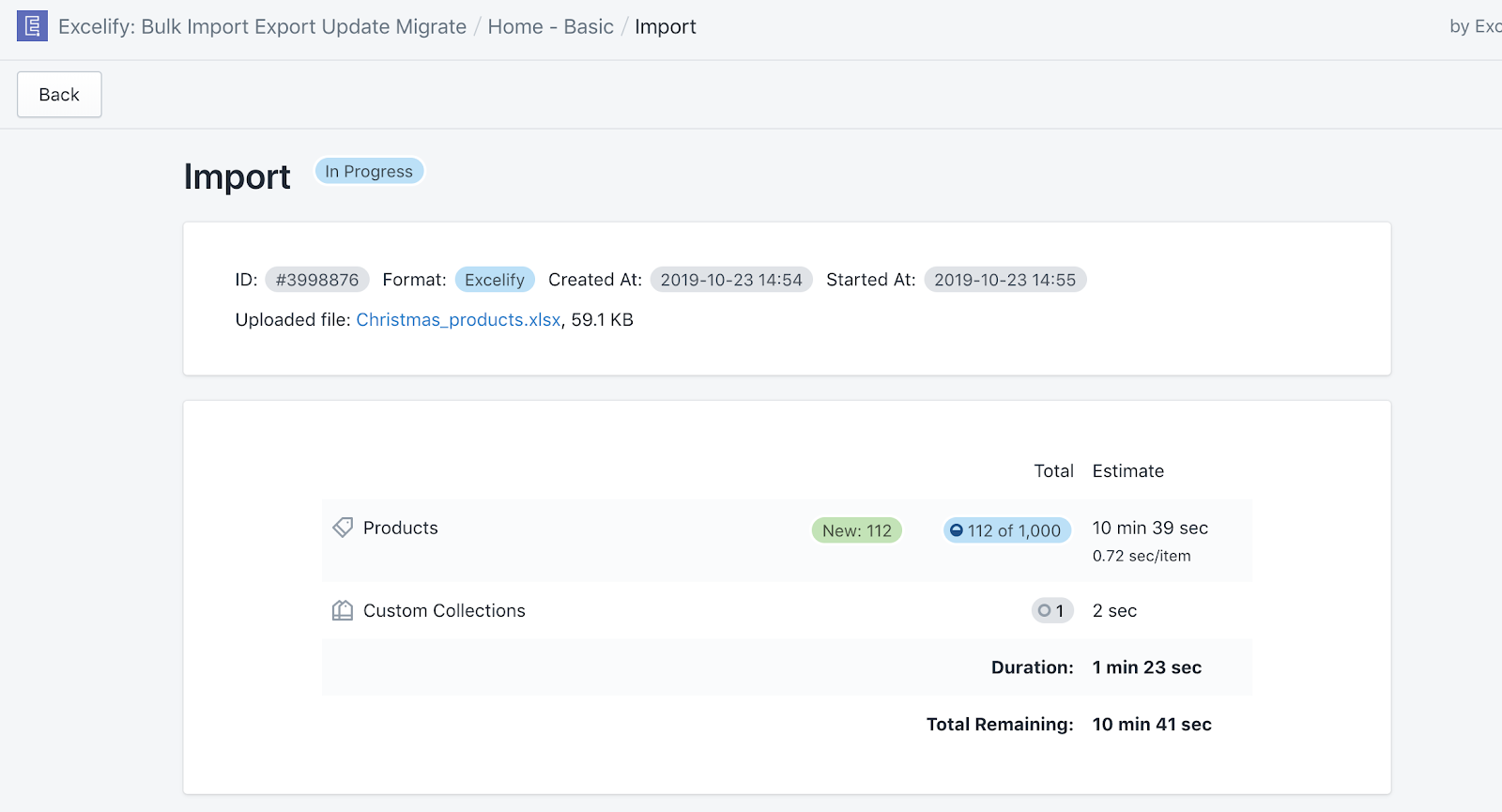
A bulk product import on Excelify. Image source: swankyagency.com
Once your site is populated with products, you can make use of native Shopify tech such as Flow and Launchpad to further streamline your store’s back-end processes. Combine these time-saving automation tools to schedule and monitor events such as major product releases, content changes and sales campaigns.

Behind-the-scenes with Shopify Flow. Image source: shopify.com
#2 Respond to your customers
One surefire way to ramp up your ecommerce offering is to improve your customer service.
A key part of this is being responsive to your customers wherever they are. Be ready to engage with shoppers on whichever channels they are using to communicate with you, whether this be Instagram, email or SMS.
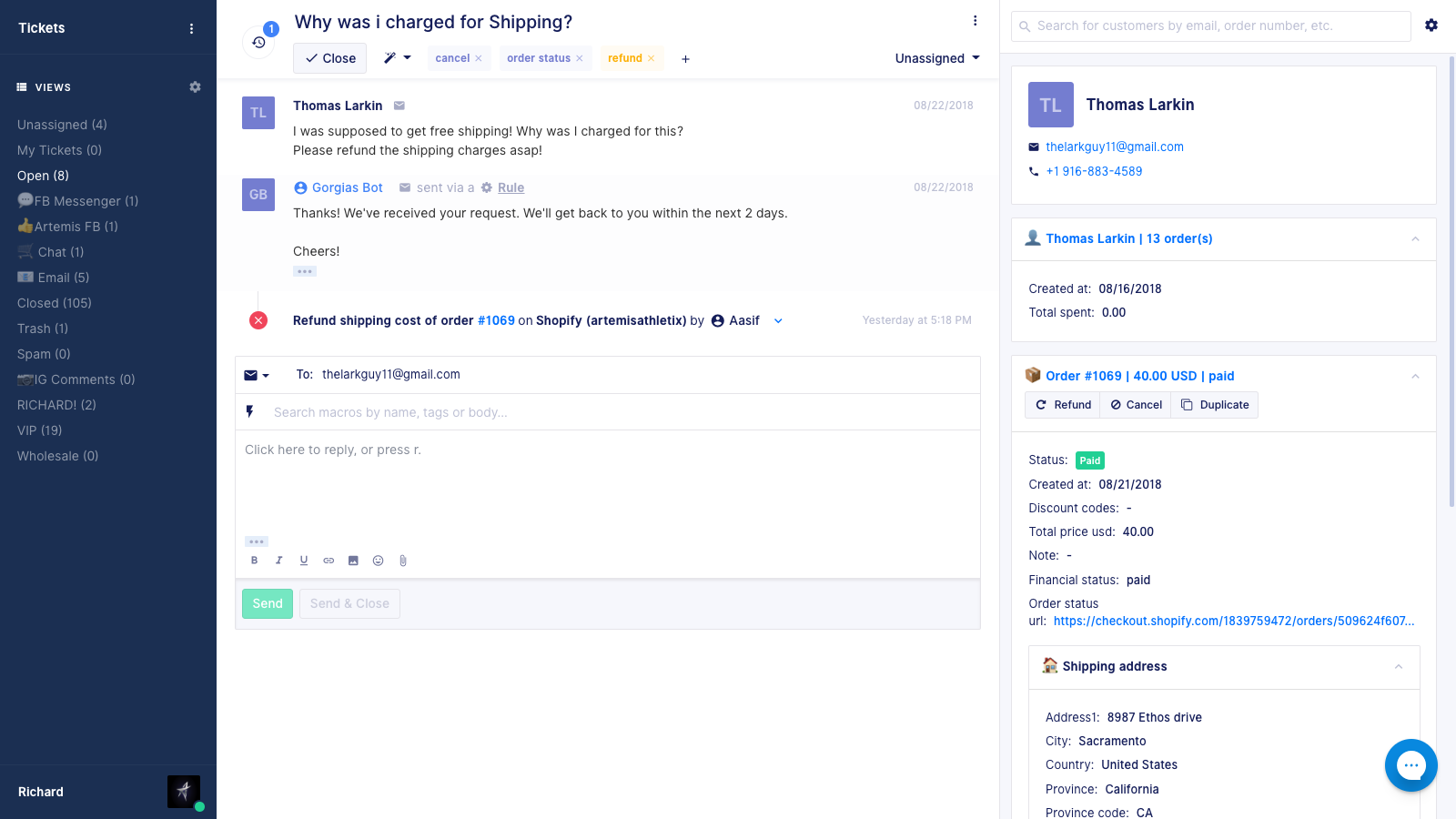
Managing customer responses with Gorgias’ user-friendly interface. Image source: shopify.com
Making sure you’re responding quickly to customers will not only improve your reputation as a reliable retailer (which is particularly important in times like this when consumers are extra cautious), but it can contribute to benefits for your bottom line, including increased revenue and reduced return rates.
Ecommerce helpdesk tool Gorgias keeps all your customer conversations in one place, making it quick and easy to track and respond to queries across a number of channels. We recently caught up with Gorgias’ Strategic Partnerships Manager Lucas Walker to get his top customer service tips for navigating the COVID-19 retail climate. Check out his recommendations, including more advice on how and where to respond to customers, in this video.
#3 Optimise your checkout
Losing shoppers before they complete their checkout journey is an all-too-familiar tale for ecommerce retailers. Maybe some last-minute delivery doubts made them abandon their cart, maybe a better offer tempted them away, maybe the checkout process was just too long. As traffic and demand increases, you need to take steps to reduce those lost sales by making it easier for people to click that final ‘buy’ button.
So, what are some quick tactics you can employ to optimise your checkout and increase conversions?
- Create a branded checkout experience which includes your logo and company colours.
- Simplify the checkout process to make the overall journey as fast as possible.
- Offer multiple payment options for ultimate convenience (e.g. Apple Pay, Android Pay, Shop Pay, Klarna).
- Foster a sense of trust by displaying card logos and security seals.
- Include a visible progress bar to guide customers through their checkout journey.
When it comes to a tech solution to help you optimise your checkout, our top pick for Shopify Plus stores and enterprise businesses is Dynamic Yield. This powerful testing tool will allow you to A/B/n and multivariate test your checkout page, which is essential to track if a certain change is making a positive difference to your conversion rate.
What’s really great about this tool is that you can run dynamic tests. This means that as one of your variations in a live test starts to obviously outperform the others, more of your traffic will automatically be driven to that winning version. The result? More revenue – and more time saved – for you!

The results of a Dynamic Yield test that Swanky Australia team are running for a client. Image source: Sean Clanchy on LinkedIn
#4 Automate your logistics
To ensure a fast and frictionless customer experience, automation is key. Once a solution reserved only for the biggest business and boldest budgets, it’s now transforming the way that ecommerce brands of all sizes operate.
Automation is about streamlining, speeding up and simplifying routine processes that are usually very time and resource-intensive. It’s essential for effective ecommerce logistics.
When it comes to a platform that can help you automate your logistics, Linnworks is well worth your consideration. This inventory and order management solution helps retailers automate their entire online selling processes from one centralised system.
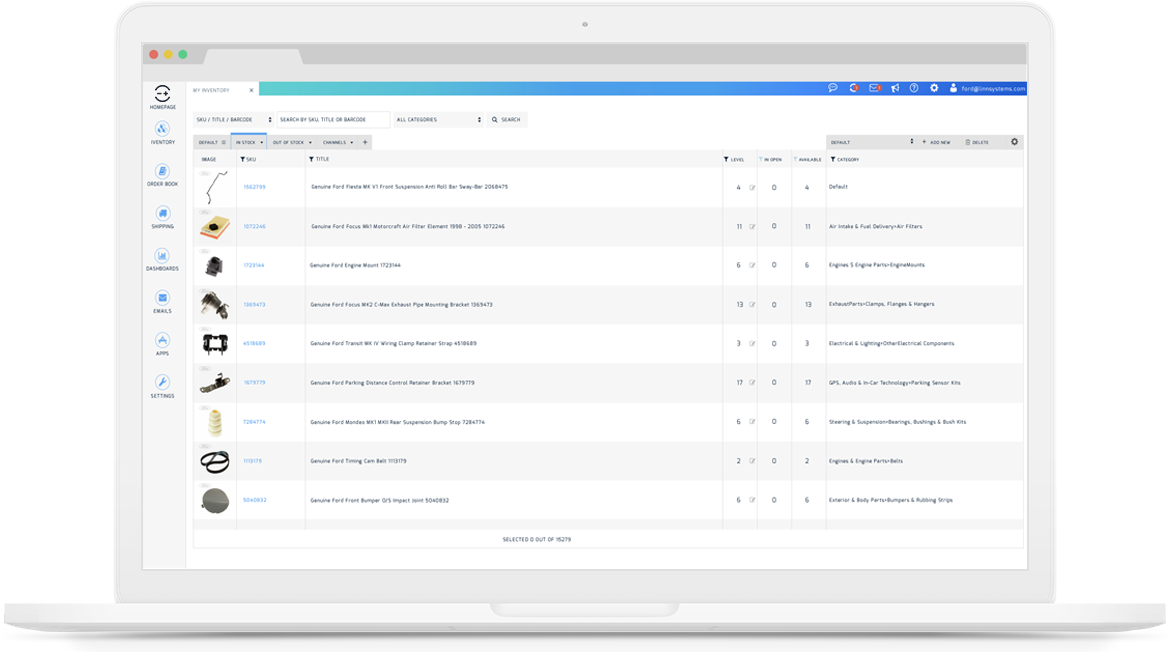
Linnworks: all your selling processes automated in one unified system. Image source: Linnworks
More specifically, Linnworks connects all your sales channels and synchronises your inventory to ensure you’re not overselling, while providing you with complete visibility of your stock and warehouse operations for increased efficiency and greater cost-savings – all hugely valuable benefits in such a turbulent retail climate.
Linnworks can integrate with your fulfilment and shipping suppliers too, allowing for faster and more reliable order fulfilment.
It’s also worth mentioning the importance of automating your returns. Returns are a time-consuming, logistically-challenging reality of ecommerce that, when handled badly, can have significant effects on your reputation and revenue. With a streamlined, customer-friendly returns process however, you can build trust, improve retention and encourage repeat purchases.
Popular shipping platform ShipStation allows retailers to automate returns according to their unique returns policy. Their branded returns portal allows customers to easily initiate a return and create a label in just a few clicks. Plus, merchants can use the portal to automatically capture and collate reasons for returns. Over time, this will provide valuable actionable insights into your products and fulfilment process.
This handy video highlights the simplicity of the branded portal for merchants and customers:
#5 Reach out to existing customers
At a time when consumer confidence is low, it’s never been more important to try and maintain a strong relationship with existing customers. Why? These are the customers most likely to stick with you during a difficult time like this.
Loyalty and reward programs
One cost-effective way to keep your most valuable customers engaged is to offer a loyalty and rewards program. This is a tried and tested way of building meaningful relationships with your customers, whilst offering a more engaging shopping experience.
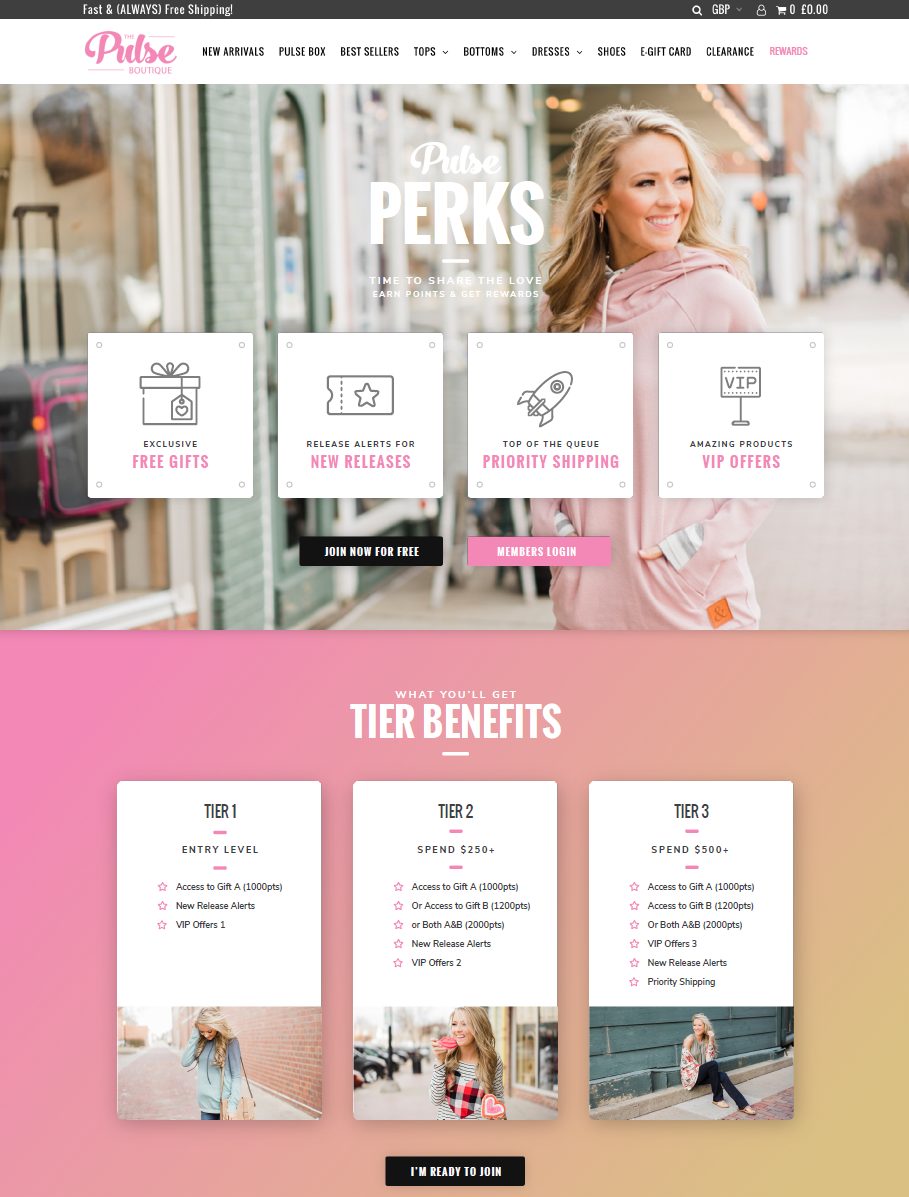
The loyalty program landing page that Swanky’s design team created for fashion client The Pulse Boutique. Image source: swankyagency.com
In practice, here are some quick loyalty strategies you can implement to strengthen connections with existing customers:
- Create an exclusive club that offers member-only deals such as free shipping and surprise gifts.
- Reward customers for leaving reviews and sharing their experiences on social media.
- Send regular branded loyalty emails to customers, reminding them of their points balance and letting them know what they need to do to claim their next reward.
When it comes to launching and managing a loyalty program, there’s only one solution for Swanky: LoyaltyLion. This data-driven loyalty and engagement platform is trusted by thousands of ecommerce brands worldwide, including Skinnydip London, 100% Pure and Swanky client The Pulse Boutique.
Data-driven customer engagement
Another way to nurture existing relationships is to leverage customer data to ensure you’re sending the right messages to the right people at the right time. Armed with detailed understanding of your customers, you can tailor your messaging to provide a highly engaging, personalised user experience at every touchpoint.
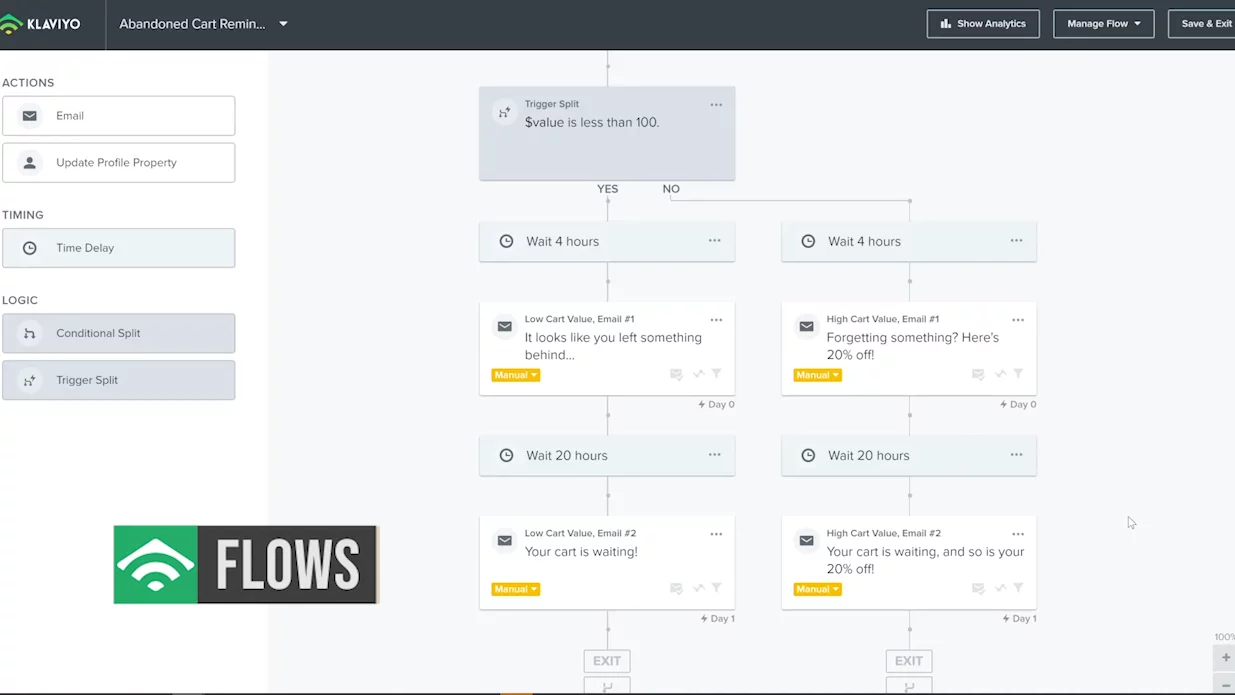
Creating automated, personalised communication flows using Klaviyo. Image source: Klaviyo
The ecommerce ecosystem is bursting with innovative customer engagement solutions that can help you create automated, data-driven marketing campaigns that convert. Whatever your business’ size, turnover or vertical, there’s a customer engagement tool on the market for you. Our favourites include Klaviyo, the dotdigital Engagement Cloud and Emarsys, to name just a few.
#6 Help new customers trust you
We’ve looked at some quick wins for improving retention amongst your existing customer base. Now, let’s turn our attention to new customers.
As the coronavirus pandemic continues to escalate, it’s no surprise that people are feeling ‘fragmented and disconnected’, and therefore less willing to connect with and trust brands (especially brands they’ve not previously shopped with). With this in mind, what can retailers do to resonate with cautious customers and help enhance trust?
Consider the power of user-generated content. This all-too-often underrated marketing tool is an effective way to connect with shoppers that are new to your brand and help gain their trust. By associating real people and their opinions with your store (through things like layered product reviews, customer-submitted photos and video testimonials) you’re helping to personify your brand and establish important emotional connections.
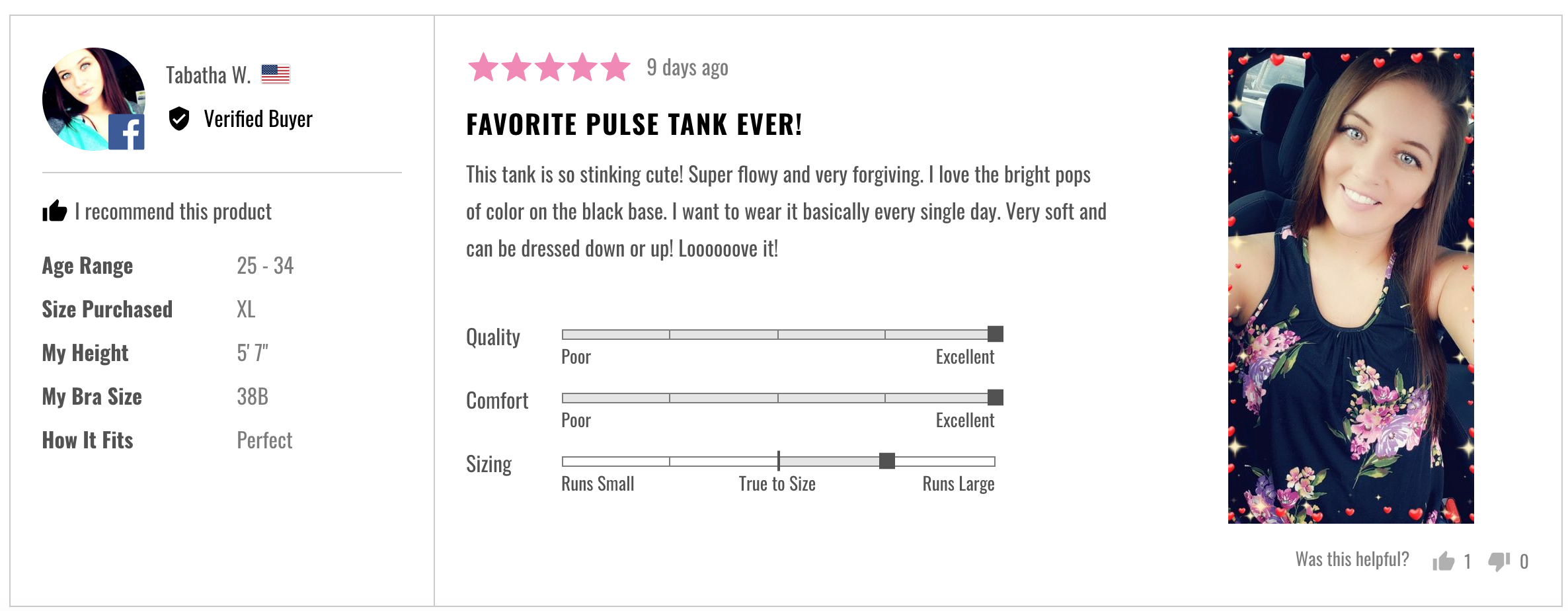
An example of a layered review, powered by Okendo. Image source: swankyagency.com
We recommend Okendo as a go-to customer content tool. Over 1000 high-growth Shopify retailers (including huge household names like Finisterre, Skims and ZitSticka) currently use the platform to quickly capture high-impact reviews, build shopper trust and compel buying action.
Other quick-win tactics you might want to consider for building trust amongst new customers are:
- Clearly display trust badges and security seals on your site.
- Feature logos of well-known organisations who have endorsed your products.
- Provide a clear, concise, easily-accessible returns policy.
- Be transparent around delivery dates.
- Display your contact details.
- Be proactive in seeking customer feedback.
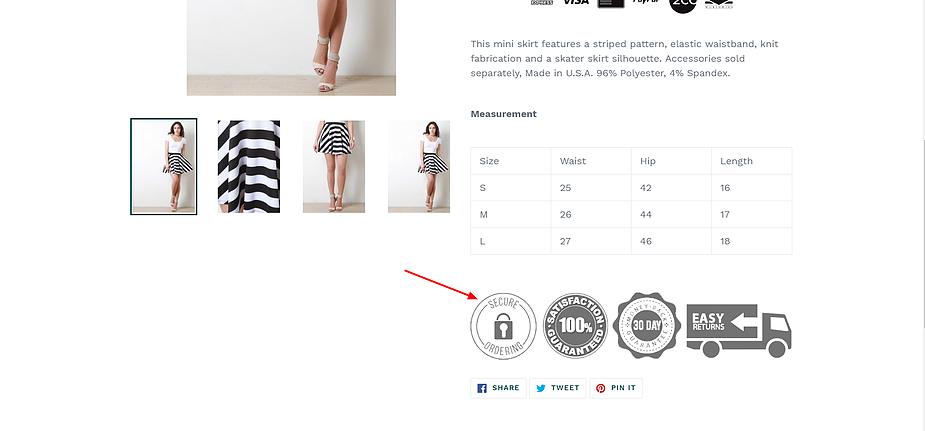
Trust badges and security seals are key for building customer trust. Image source: @Stilyoapps at Medium.com
#7 Consider offering a subscription
With their host of benefits for business and customers alike, subscriptions have taken the modern ecommerce market by storm. When you consider the convenience and security they offer in a time of panic buying and empty supermarket shelves, it’s no surprise that their popularity has boomed during the coronavirus pandemic.
A sneak peek at the subscription site we designed for Pasta Evangelists. Source: swankyagency.com
If a subscription service is something you think fits with your brand, your products and your vertical, then now could be a prime time to consider branching out and leveraging the power of subscription ecommerce.
We recommend ReCharge as the go-to tech solution for merchants to launch and scale subscriptions. You can sell and manage repeat orders in one unified platform that integrates seamlessly with Shopify.
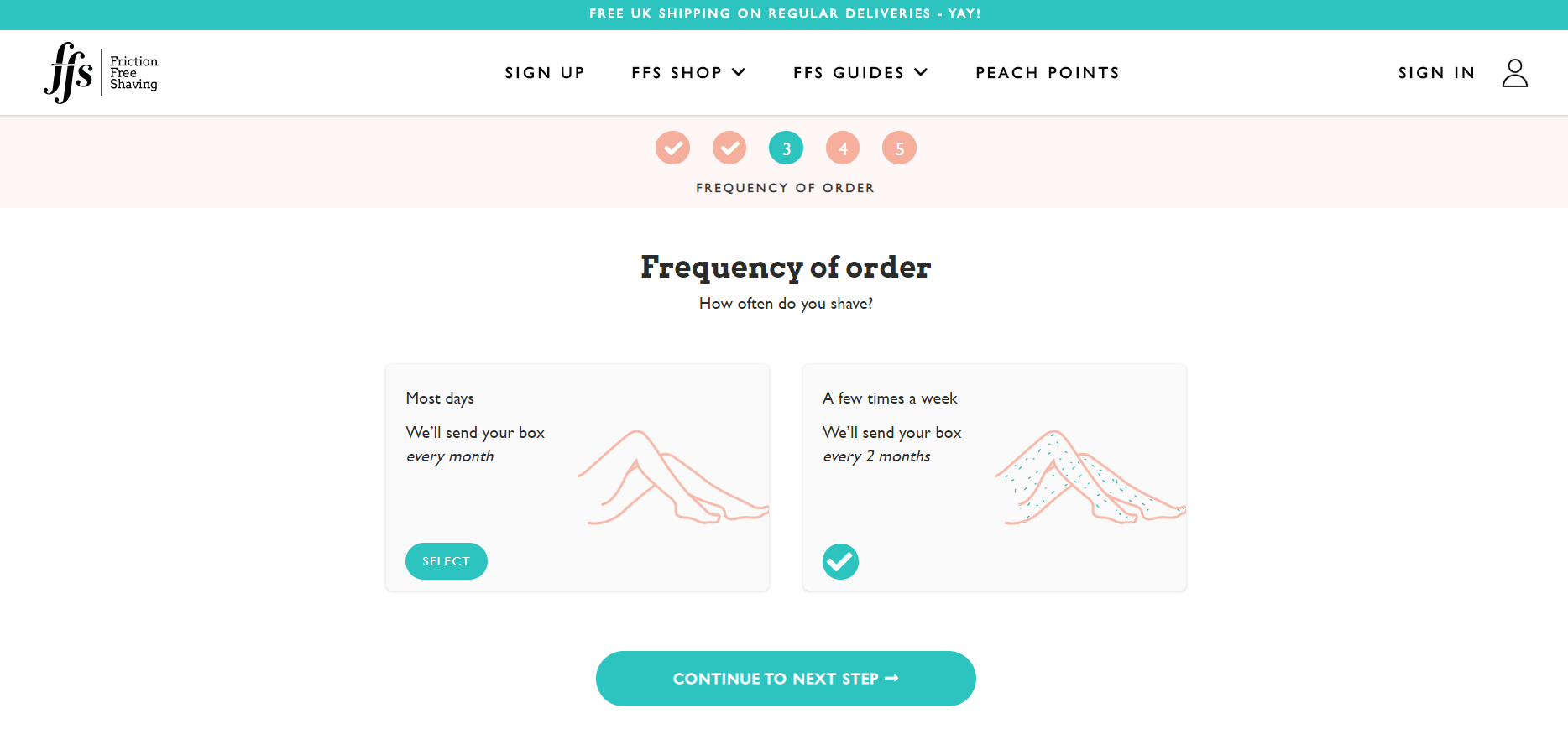
Part of the subscription flow we implemented for razor delivery service Friction Free Shaving. Image source: ffs.co.uk
What’s more, ReCharge’s ‘subscribe and save’ product page option allows for the quick and easy transformation of one-time products in monthly subscriptions – perfect if you’re on a mission to give your ecommerce business a quick boost.
To find out more about how you could supercharge your ecommerce business with a subscription service, check out our recent Tips in Ten Q&A session with ReCharge’s Partnerships Manager, Rob Barr:
Summary
COVID-19 has brought about a series of truly unprecedented measures that are changing the retail climate before our eyes. We hope the businesses that embrace change by adopting technology to automate and optimise their ecommerce operations in the short term will be the ones who survive and thrive in these new extraordinary times.
Your ecommerce experts
If you’re after some further guidance on how to successfully navigate the COVID-19 retail climate, including advice on picking the tech stack that’s right for your business, get in touch with Swanky’s friendly team of Shopify Plus Experts today.

